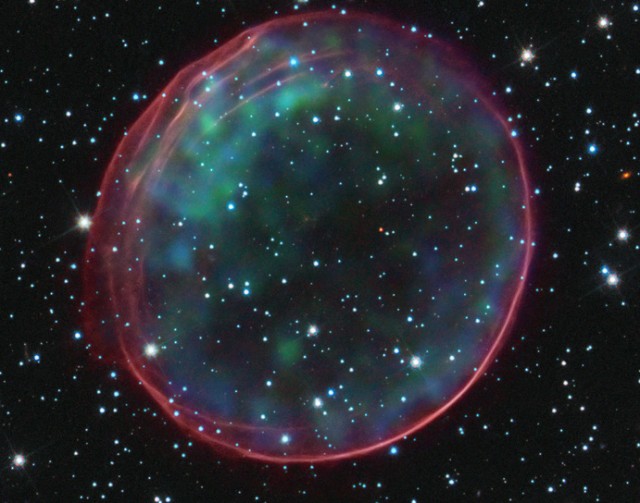Super-bright supernova might not be so unusual after all
Ars Technica » Scientific Method 2014-04-24

White dwarf supernovas—also known as type Ia—are both bright enough and consistent enough in their characteristics to be used to measure distances to far-off galaxies. That's why the discovery of an anomalous supernova 400 times brighter than expected gave astronomers indigestion. While researchers have identified other super-bright supernovae that are likely the result of exploding stars, these observations didn't fit easily into any previously described phenomenon.
However, one possibility remained: perhaps the light from this supernova had been magnified by gravitational lensing somewhere between the explosion and Earth. If that's the case, the anomalous explosion could be an ordinary white dwarf supernova that happened to appear much brighter, instead of a fundamentally new type of event. Robert M. Quimby and colleagues found a galaxy that could be doing the lensing by monitoring the supernova as it faded. While lots of gravitational lenses have been identified, this is the first clear example of magnification of a supernova.
The Panoramic Survey Telescope and Rapid Response System 1 (Pan-STARRS1, designed in part to locate transient events) detected the anomalous supernova on August 31, 2010. Based on follow-up observations, astronomers determined that it was more than nine billion light-years away. However, for that to be true, the outburst had to be more than 400 times brighter than a typical exploding star, or 30 times brighter in peak light output than expected from a white dwarf supernova.
Read 8 remaining paragraphs | Comments